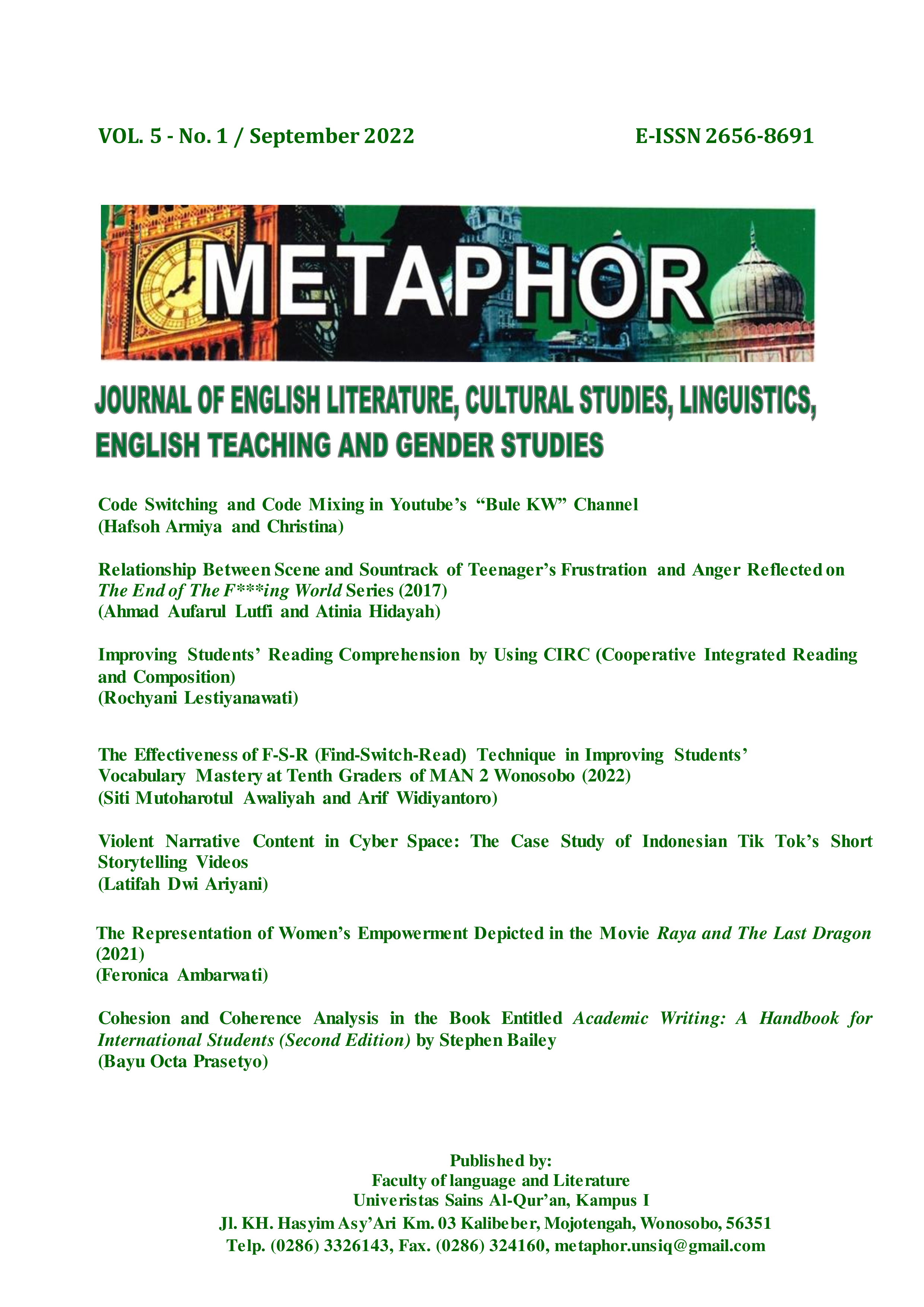Cohesion and Coherence Analysis in the Book Entitled Academic Writing: A Handbook for International Students (Second Edition) by Stephen Bailey
Keywords:
discourse analysis, grammatical cohesion, lexical cohesion, coherenceAbstract
This research is conducted to explain Cohesion and Coherence Analysis in the book entitled Academic Writing : A Handbook for International Students (Second Edition) by Stephen Bailey. The researcher used qualitative method to examine the problem. The collecting data of the research method includes reading and understanding, finding out, collecting, identifying, and classifying and arranging. The analyzing data of the research method by used displaying, explaining, interpreting, and concluding. The theories and approaches used by researchers are discourse analysis, cohesion and coherence analysis. The results of the study are cohesion type, and coherence type. Grammatical cohesion includes reference, substitution, ellipsis, and conjunction. Lexical cohesion includes the type of reiteration, and collocation. Coherence type includes resemblence relations, cause-effect relations, and contiguity relations.
References
Brown, Gillian & Yule, George. 1983. Discourse Analysis. Cambridge University Press.
Denzin, N. K., & Lincoln, Y. S. (Eds.). (2000). Handbook of qualitative research (2nd ed.). Thousand Oaks, CA: Sage.
Halliday, M. A. K. & Hasan, Ruqaiya. 1976. Cohesion In English (In English Series). Longman Group Ltd.
Kehler, Andrew. 2002. Coherence, Reference, and the Theory of Grammar. CSLI Publications.
Taboada, Maite Teresa. 2004. Building Coherence and Cohesion : Task-Oriented Dialogue in English and Spanish. John Benjamins Publishing Company.
Taylor, Stephanie. 2013. What is Discourse Analysis?. Bloomsbury Academic.
Van Dijk, Teun A. 1977. Text and Context : Explorations in the Semantic and Pragmatics of Discourse. Longman.



